different age groups can move freely around the setting - with
significant benefits. The nursery's June Graham explains why it
works.

One of the first things you will notice when you enter Cowgate Under 5s Centre in Edinburgh is ... children. Not stowed away in age-separated rooms, but free to move around and choose where they want to spend their time. Our free-range children range from crawling babies right through to the ready-to-fly-the-nest five-year-olds. We live as a family unit with fluid movement for us all. Working and playing together.
When the nursery opened in 2002, there were three distinct playrooms that split the children into age groups. La Camera dei Bambini housed our youngest children aged up to two years old. Next door, La Salle de Jeux was populated exclusively by two-year-olds, while the last of the rooms - Sala Infantil - was home to our oldest children from three to five.
Natural curiosity, however, led to the children from the older two areas enjoying visits to the other rooms, and it wasn't long before we could see the benefit of these visits. In particular, it could be very beneficial to a child who is settling in to nursery or a bit upset to be able to spend some time with an older sibling.
We positively encouraged this and supported it. It then became commonplace to see children out of their allotted rooms and free to choose the space they wanted to be in. If this was the hallway, then so be it, and the children could access the garden any time they wished, whatever the weather.
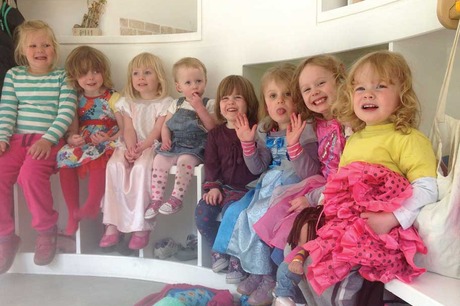
BIRTH TO THREE
This flexibility of movement was further advanced two years ago when the first two rooms were opened up and combined to form the Birth to Three space. It is a strategy that has been described as innovative by both Education Scotland and the Care Commission.
The idea was the brainchild of deputy head Karen Thomson after personal research. She was interested in how babies use space and in the adult perceptions of babies' lives. She sought to challenge the traditional views of childhood within the institutionalised care of young babies and unveil truths about the lives of young babies in day care settings.
Before work to open up the spaces began, staff and parents were consulted fully, and discussed what they saw as the pros and cons. The idea, at first, was met with trepidation and many of the staff team were unsure if it would work out. Although we were used to the more mobile children journeying outside their assigned area, our crawling and bottom-shuffling babies were always cocooned safely on the floor of the baby room, or sitting on a lap. We knew where they were and that they were safe.
However, as the first nursery in Scotland to gain the Investing in Children award, we knew it was essential to listen to the non-verbal cues of our youngest children and that meant giving them the same choices as older children had. This meant that they should also have the choice of where they wanted to spend their time.
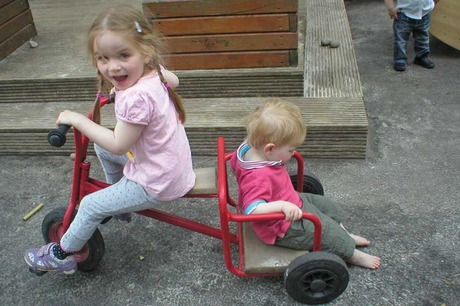
BENEFITS
Our younger children are now more mobile and adventurous. Where once they were kept behind a safety gate, they can now access all parts of the nursery. With this new found freedom, they appear to be more confident and it is also helping them to make their own risk assessments and to develop their spatial awareness. They can learn from falling over, and they are able to have more self-generated movement around the space.
The younger children are also making more of their own decisions. Many of our 'babies' are choosing to venture further afield and will travel between the old baby room and the Sala Infantil, stopping briefly in the middle room to explore. Their progress is never impeded. And it has to be said that a room full of three- to five-year-olds appears to hold much fascination for a lot of our younger children who choose to spend their day hanging out there.
It is a two-way street, however, as many of our older children delight in spending time with the smallest children and helping them to join in the games that they themselves have begun. The younger children can now participate in games or activities that are too complex for them to initiate themselves. Core motor skills improve as the younger children attempt to emulate the older children, and they are also more articulate.
It is not unusual for some of the older children to 'adopt' a younger child and if it is agreeable to both children they will spend a lot of time in the company of each other. This promotes relationships akin to that in a family and the children play and communicate like siblings. It has made the older children more sensitive to the needs of the younger children and they have taken on a nurturing role. This teaches the younger children about nurturing.
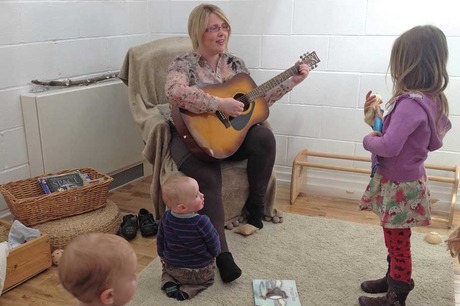
TRANSITIONS
Transitions happen naturally in the nursery as there are no closed doors and no expectations as to where a child should be. A child may be on the register of a specific room, but it is their choice that dictates where they will spend their time.
It is not unusual for a child to graduate themselves up to other spaces and become part of that group, just as a child who prefers the quieter spaces may remain in a space or come back frequently as a break from the more hectic areas.
Our approach has proved popular with parents. Helen McElhinney, mother of Benedek, aged three, wrote of his transition to the Sala Infantil:'When I asked Beni what he felt about moving to the big room, he told me that he is happy to spend time in the big room and does so anyway, so isn't worried about that at all. This is testament to how well Cowgate integrates the children from the very beginning.
'The working/playing spaces are so sensitively managed. There is a fluidity and natural balance to the whole environment, which so supports togetherness and community.
'Benedek's days continue in the big room. I asked him if he missed the small room. He said, "No ... me go there sometimes to look around ... me go there with Billy sometimes ... Billy likes to cuddle the babies." I asked him if he likes to cuddle the babies too. He said, "No ... but me watch Billy to tell him to be gentle." Well, that says it all, doesn't it? Such camaraderie, learning together some of life's most beautiful lessons - how to be kind, gentle and loving to others.'
IN THEORY
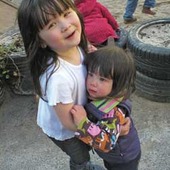 In a group of children of mixed ages, they have different expectations of each other. The younger children may look to the older ones for some contributions, whereas the older children look upon the younger ones as needing their contributions. It is recognised that there is more turn taking, social responsibility and sensitivity in mixed-age group children (Chase and Doan, 1994).
In a group of children of mixed ages, they have different expectations of each other. The younger children may look to the older ones for some contributions, whereas the older children look upon the younger ones as needing their contributions. It is recognised that there is more turn taking, social responsibility and sensitivity in mixed-age group children (Chase and Doan, 1994).
Because the children are free to be where they are most comfortable, they will find other children who naturally reflect or complement their own interests and abilities. Often, a child will like to spend time with younger children as they will allow them to be unsophisticated longer than his or her age peers will (Katz et al, 1990).
We believe that the freedom our children have is only a small part of the measures we take to ensure full social justice in the centre. We are a place where children at various phases of development can live together and are concerned more about a child's holistic growth than about development.
As a Froebelian nursery, Friedrich Froebel's principles underpin all we do here. His principles included the recognition of the child as part of a family and community and he advocated interdependence as well as independence, community as well as individuality and responsibility as well as freedom. We believe he would be very happy to see how we are carrying on his good work today.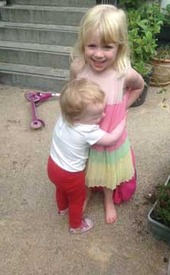
June Graham is an early years practitioner at Cowgate under 5s Centre, Edinburgh, www.cowgateunder5s.co.uk.
MORE INFORMATION
Early Childhood Practice: Froebel today, edited by Tina Bruce
Full Circle: a new look at multi-age education, editors Penelle Chase and Jane Doan (1994)
Investing in Children, www.investinginchildren.net
The Case for Mixed-Age Grouping in Early Education by Lilian G Katz, Evangelou Demetra and Jeanette A Hartman. (1990)
The Froebel Trust, www.froebeltrust.org.uk.









